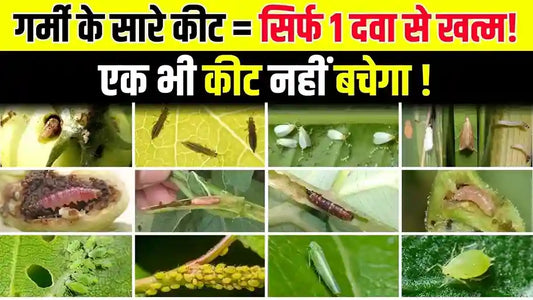Sugarcane, one of the most important crops, globally faces threat from Pests and Diseases. This blog explains the main threat in the sugarcane crop called “Rust Disease”, leading to significant yield losses if left unchecked. In this article, we'll explore effective measures to control and manage Rust Disease.
What is a Rust Disease?
Rust disease, caused by the fungus Puccinia melanocephala, is a serious threat to sugarcane crops worldwide. It can significantly reduce yield and quality of sugarcane. Rust disease is spread by spores, which can be carried by wind, rain, or insects. Spores can also survive on infected plant debris for long periods of time. When spores land on a susceptible plant, they germinate and invade the plant tissue. The fungus then grows inside the plant, feeding on its nutrients and causing damage.

Short Description of Rust Disease
Here is the detail information related to the Rust Disease:
|
Type of Infestation |
Fungal Disease |
|
Common Name |
Rust |
|
Causal Organism |
Puccinia erianthi |
|
Affected Parts Of the plant |
Leaves |
Favourable factors of Rust Disease in Sugarcane Crop
Rust fungi typically thrive in moderate temperatures, ranging from 15°C to 25°C (59°F to 77°F). High humidity levels (above 80%) create a moist environment that favors fungal growth and spore dispersal. Extended periods of leaf wetness due to frequent rainfall, morning dew, or overhead irrigation can also increase the risk of infection.
Symptoms of Sugarcane crop affected by Rust Disease.
Main symptoms of plant affected by Rust Disease are:
- Yellowish spots, typically 1-4 mm long, on both the upper and lower surfaces of sugarcane leaves.
- As the disease progresses, the yellow spots gradually enlarge and change color to a reddish-brown or brown hue.
- As the spots mature, pustules (small, raised bumps) develop on the underside of the leaves.
- In severe cases, the infection can become widespread, causing the pustules to coalesce and cover large areas of the leaves.
Bio and Organic products for control of Rust Disease in sugarcane crop
Here are the best recommendations of bio and organic products.
|
Products |
Bio/Organic |
Dosage |
|
Organic |
1.5 - 2 gms/ Ltr |
|
|
Bio |
Mix 10 kg Katyayani Verticillium in 500 litres of water |
Chemical control methods for Rust Disease in sugarcane crop
Here are the best recommendations of Chemical control measures.
|
Products |
Technical Names |
Dosages |
|
Propiconazole 25 % EC |
2 ml boost mix in 1 Litre Water |
|
|
Sulphur 80 % WDG |
750 to 1000 grams per acre |
|
|
Thiophanate Methyl 70% WP |
2 gms/ litre |
|
|
Copper Oxychloride |
2gm/ltr |
|
|
Difenconazole 25 % EC |
120 ml - 150 ml / Acre |
FAQs Relaated to Sugarcane Rust
Q. What is sugarcane rust?
A. Sugarcane rust is a fungal disease caused by Puccinia erianthi that affects sugarcane leaves, reducing yield and quality.
Q. What are sugarcane rust symptoms?
A. Sugarcane rust symptoms include yellow spots on leaves, reddish-brown pustules, and severe leaf drying.
Q. What is the sugarcane rust causal organism?
A. Sugarcane rust causal organism is Puccinia erianthi, a fungus spreading through spores.
Q. How to manage rust in sugarcane?
A. Sugarcane rust management includes resistant varieties, field hygiene, and fungicides.
Q. How to control rust on sugarcane chemically?
A. Sugarcane rust chemical control uses Propiconazole 25% EC, Sulphur 80% WDG, and Thiophanate Methyl 70% WP.
Q. What is the best time to apply fungicide?
A. Early Morning or Late Evening is the best time for application of pesticides.
Q. Can you suggest fungicides that help in Powdery Mildew?
A. You Can contact our agri advisor for the complete information.
Q. How to apply?
A. The above mentioned most of the products are applied by foliar spray.












